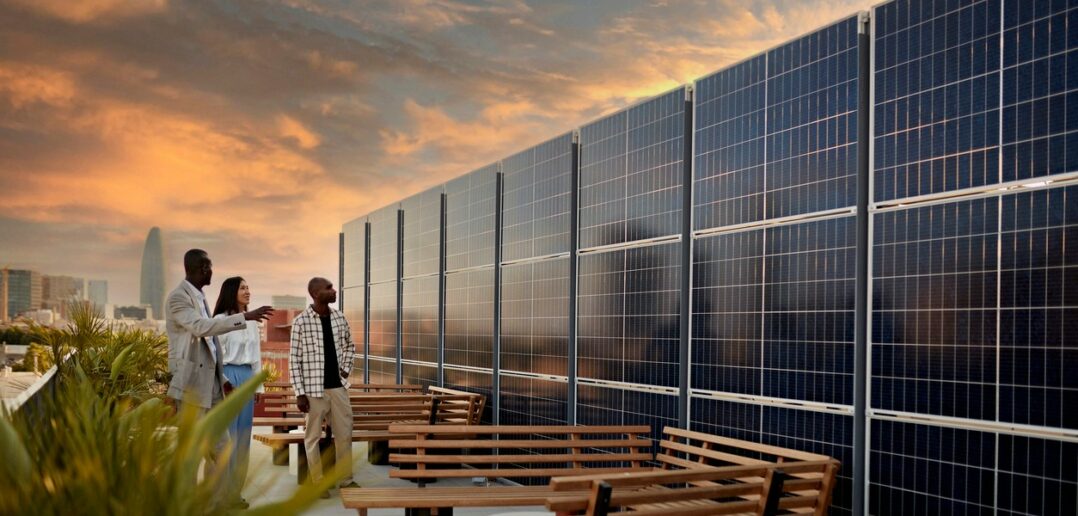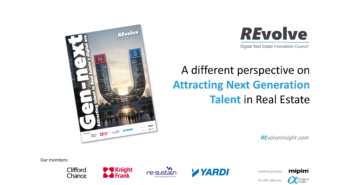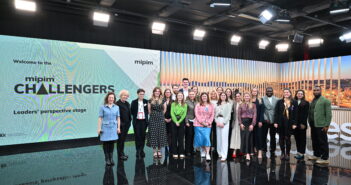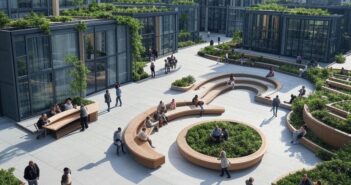In the second of a new series of blogs discussing Schneider Electric’s approach to Responsible and Responsive real estate, Karin Teichmann, spokeswoman of the board for EUREF, discusses driving tenant success in the face of energy volatility.
Soaring energy prices across Europe over the last two years have spiked costs for commercial tenants and increased leasing risks for landlords. Yet there has been an unexpected upside: much more engagement and interest in driving energy savings, as well as greater discussion around the creation of energy via renewable sources.
“Commercial real estate landlords traditionally haven’t paid much attention to the energy equation,” says Cormac Crossan, global business development lead for commercial real estate at Schneider Electric. “But now it has become a core topic for asset managers. War in Europe and matters of energy security have altered the game completely.” He adds: “The risk profile of a building is being affected, and you need to mitigate risk. Tenants also need to know what their options are.” According to Cormac, Schneider Electric can help “build in” energy strategies for a building’s current and future needs – even if those needs rapidly evolve.
One such project involving Schneider Electric is the EUREF campus in Berlin, an energy-independent business park which is also being replicated in Dusseldorf. The firm behind both projects is EUREF AG, a creative developer of real estate, whose buildings are optimised in terms of energy and the environment. The company was founded in 2007 by Reinhard Müller in conjunction with the acquisition of a 5.5-hectare area surrounding the gasometer in Berlin-Schöneberg. A new city district has subsequently arisen as a symbol of the shift to renewable energy in Germany.
EUREF has shown that it is feasible to build sustainable buildings, to lease them and make money from them – Karin Teichmann
Karin Teichmann, spokeswoman of the board at EUREF, explains: “EUREF Berlin is a true campus with a mix of universities and businesses. It is fully leased with a long waiting-list of potential tenants!” She adds: “EUREF has shown that it is feasible to build sustainable buildings, to lease them and make money from them.”
The site comprises LEED Platinum certified new buildings and listed old buildings, characterised by innovative and energy-efficient building technologies. It benefits from a CO₂-neutral energy supply through biogas cogeneration plant and locally generated renewable energy from photovoltaics and wind power. Furthermore, there is smart-grid technology and smart metering across the campus.
Finally, guided tours of the campus, company visits, and informative projects such as an Energy Workshop have expanded its function as a forum and information hub. Says Karin: “We have up to 100,000 visitors per year, many of whom are also trying to learn from what we have built. They see it as a case study for the future – we are both a laboratory and a showcase.”
Adds Cormac: “EUREF is an incredible example of what happens when you put energy at the core of your proposition. If you move into the campus you have to be involved in energy security because they are trying to create a thinktank of minds.
“So much energy in buildings is wasted; this is a huge opportunity to free up capital, serve tenants and keep occupiers in the long term.”
The next project for EUREF is a campus in Düsseldorf, which will take some inspiration from Berlin, but also develop its own methodology based on the local terrain and environment. Schneider Electric has signed up to become the anchor tenant of this exciting project. Says Karin: “One thing we learned from Berlin is to get everyone around the table from the beginning.” This me eting of minds has created a raft of innovative ideas for Düsseldorf, as she explains. “The aim is to supply the campus in a CO₂-neutral and safe manner. And this with an annual building energy demand of 2.4 gigawatt hours for heat and 2.7 gigawatt hours for air conditioning.
“This is achieved through the thermal use of the adjacent Lichtenbroich quarry pond, a gigantic heat reservoir that supplies both heat in winter and cold in summer through highly efficient heat pumps.
“Another innovatively used energy source is the sun, which provides electricity for self-consumption all year round with the help of PV systems on the roof and façade of the Innovation Campus. The ambient air is also used to cool the building and dissipates excess heat via a hybrid cooler.”
These approaches are important not only for the challenges of today – but to anticipate what Cormac calls the “tectonic shifts” of tomorrow. “The overall energy landscape is shifting as the whole world moves towards electric mobility,” he underlines.
“We have predicted that 88% of all electric vehicle charging will happen in buildings – so all the hydrocarbons used in the world will have to become electrons that are channelled through properties. That will mean 30-40% more electricity running through buildings.”
In turn he asks: “how can these assets become the filling stations of tomorrow?” He notes diverse issues in play, especially with older buildings – considering that some 50% of today’s properties will still be standing in the year 2050. All in all, he concludes, the issue needs to be discussed right now.
The only limit is the imagination – the technology is already here – Cormac Crossan
“If you deploy energy efficiency measures in your buildings, you can save 30% of the energy that you’re currently using and repurpose that to charge electrical vehicles. Ultimately, that can create an additional revenue stream for buildings. Plus, you can create additional services as they do in filling stations today, where you can get coffee, or use a vending machine. The only limit is the imagination – the technology is already here.”
For companies that don’t know where to start when it comes to sourcing additional, clean energy, Cormac also notes that “Schneider Electric is the world’s largest broker of decarbonised energy, we have a marketplace to connect customers with suppliers. It is key for corporates to know that they can access decarbonised energy when they are moving into an office or a logistics asset, as it affects their risk in the long term.”
Equally, for companies who are unsure about accessing the capital for energy projects, Cormac notes that strategic joint ventures can benefit a range of parties in the industry. By way of example, Schneider Electric often matches real estate owners with roof space to renewable energy firms for a win-win situation. “Take the US, where a lot of energy infrastructure is quite dated and subject to power outages,” he notes. “We helped set up the largest solar array in North America at JFK Airport, through a joint venture strategy. They supplied the roof space and we added the technology and the infrastructure. The result is the largest installation we have ever done – and 100% uptime for the airport in terms of energy supply.”
Schneider Electric: Enabling Responsible and Responsive Real Estate
The real estate sector faces the urgent challenge of minimising its carbon footprint to comply with government regulations, reduce operational costs, and satisfy the evolving needs of occupants and stakeholders. Join our upcoming exclusive LinkedIn live together with Brookfield and Arup, to know more about Enhancing property investments: How ESG and data combine for solid returns.
Download our eGuide to explore how our solutions deliver real impact for our customers across key focus areas: sustainability acceleration, energy management, asset and operations performance, user experience and portfolio strategy. Find out more about Schneider Electric here.



